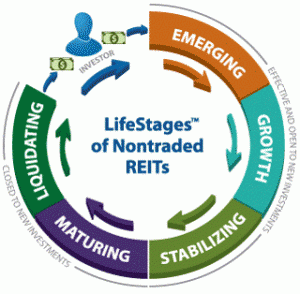Johnathan Rickman | Blue Vault
As a wealth advisor, you want what’s best for your clients. You’ve explored the options, done your research, and now you’re ready to pitch an investment opportunity centered around an unconventional asset class: an alternative investment.
You’ve chosen PGIM Private Credit Fund, a nontraded business development company (BDC), based on its performance returns and income potential. The broker-dealer working with you described the investment as a continuous offering and one that is largely illiquid.
But as you begin to process all this information, you find yourself confused by terminology that seems contradictory. Suddenly, you have just as many questions as when you started:
Why do so many other BDCs have ticker symbols? How can an illiquid offering be “continuous” in any way? What’s the difference between an “offering” and a “fund”?
Don’t worry, lots of financial professionals ask these very same questions. The short answer to all of them is, it’s complicated. But hopefully the following will provide some clarity!
Offering vs. Fund
An offering is also known as a securities offering, investment round, or funding round. Securities offerings represent a singular investment or funding round.
A fund, on the other hand, is a professionally managed pool of money that generates returns for its investors. The PGIM opportunity fits this definition. But it can also be called a “continuous offering” because it raises capital continuously over time instead of through a single funding round. By allowing investors to purchase shares on an ongoing basis, the fund’s managers have more flexibility to meet the fund’s key income-generation objectives.
Public Offerings vs. Private Placements
Public offerings seek to raise money from everyone and attract lots of investors. They face few restrictions on solicitation and mostly trade on exchanges. As they are marketed to mom-and-pop investors, they are regulated by the Securities and Exchange Commission (SEC) and come with an SEC-reviewed prospectus outlining the investment strategy.
Private placements raise money from accredited investors only and thus attract a limited pool of investors: those with annual household incomes of $250,000 or more and whose net worth is valued at $1 billion, minus the value of their home.
Most private placements that Blue Vault covers file an exemption request with the SEC under what’s known as Regulation D, or “Reg D,” which permits the sale of an unlimited number of shares to an unlimited number of accredited investors. Private placements come with an offering memorandum summarizing investment terms, risks, and objectives.
With fewer investors involved, and with those involved being wealthy, private placements aren’t as heavily regulated as public offerings. However, their solicitation is regulated more.
The PGIM opportunity is a private placement.
Traded vs. Nontraded
Traded funds are marketed to the everyday investor and are sold on an exchange.
Nontraded funds are not sold over an exchange but rather through broker-dealers.
Liquidity vs. Illiquidity
Liquidity refers to the ease with which an asset or security can be bought or sold without affecting its market price. The PGIM Private Credit Fund is largely illiquid as its portfolio of debt assets involve significant appraisal and transaction processing.
Review more frequently asked questions and insights to expand your alts knowledge and consider becoming a Blue Vault member today.











